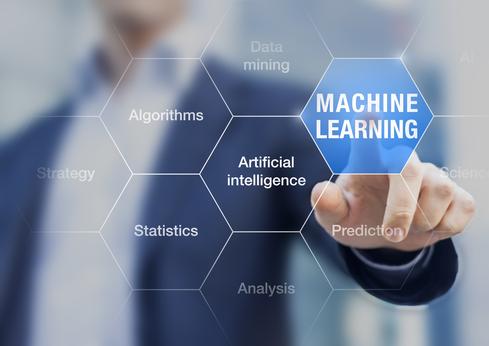Machine Learning, Analytics Offer Untapped Potential, McKinsey SaysMachine Learning, Analytics Offer Untapped Potential, McKinsey Says
Incorporating data analytics' value into corporate culture is essential to competing against digital disruptors. information interviewed McKinsey partner and lead researcher Michael Chui about a new report addressing competition in a data-driven era.


More Data & Analytics Live at Interop ITX
Business and industry have only just scratched the surface when it comes to realizing the potential value from analytics. Consulting firm McKinsey predicted huge value to come in its 2011 report, Big Data: The Next Frontier for Innovation, Competition, and Productivity. and while some of that has been realized already, there's plenty that remains untapped, and there's even more than the original McKinsey report anticipated.
The firm released a new report, The Age of Analytics: Competing In a Data-Driven World, to update its previous research, look at some of the new trends, and provide a picture of the current state of analytics in organizations today. information spoke with one of the new report's lead researchers and authors, McKinsey Global Institute (MGI) partner Michael Chui in an interview. Overall, MGI still believes there is huge potential for data and analytics to provide value -- even more than anticipated five years ago when the first report was release.
[Is your data organization a part of IT? Read Chief Data Officers: More Report To CEO Than CIO.]
"But for the most part, most organizations have not been able to capture the majority of the potential yet," in terms of analytics, Chui told information. "There's more work to be done. We are not saying that companies are bad. Almost every company has started doing something. What we've said is there's a lot more you can do."
A couple of the underlying factors behind why the potential has not yet been tapped include organizational issues and the unmet need for analytics talent in the market. But there may be more to it than just those issues, as demonstrated by adoption rates across various business domains. For instance, domains such as retail and location-based business services are quite advanced in the adoption and use of analytics, according to Chui. The public sector and healthcare are quite a bit slower, he said. Manufacturing is somewhere in the middle, particularly with its more recent foray into using data from sensors and the internet of things (IoT).
Chui told information that the degree to which companies in particular domains have adopted analytics may coincide with the degree to which companies in these sectors have had to compete against digitally native companies. Consider Amazon's online retail operations and its use of analytics or Uber's rapid spread of its car-service matching engine. Other industries may not yet have felt such significant digital disruption and therefore may not be aggressively pursuing analytics strategies. Yet.
The Talent Factor
Another big factor in analytics adoption -- or lack of it -- is the talent gap. The 2011 report identified the talent gap and predicted it would continue. And the new report notes that while more training programs have emerged to help fill the data analytics talent gap, it's still not enough to match the demand to the supply.
"We've seen wages for data scientists increase much more rapidly than for other occupations, suggesting a lot of demand for those types of people," Chui said. MGI is now predicting the emergence of another role -- business translators. These professionals hold many different titles within organizations today and their job is to serve as a liaison between the data science organization and the business. These pros' responsibilities include identifying and prioritizing business problems for data scientists to address; meeting with the C-suite to discuss data science capabilities; and holding a deep understanding of the business domain.
Hiring these individuals may help close the data science talent gap. That's because many organizations have been seeking the so-called data science "unicorns" who know statistics/mathematics, software programming, and the business domain.
"We would describe data analytics as a team sport," Chui said.
Those data science unicorn skills may be found in several different individuals who make up a formal or ad hoc team for analytics.
"One potential profile for a business translator is someone who goes to business school, takes several classes in analytics and understands analytics techniques, and also has deep domain knowledge," Chui said. But he cautioned that there are likely multiple different profiles for this emerging role.
Stalled Progress?
A big question about the new report is this: Why haven't companies captured more value from analytics? After all, most companies have begun analytics practices.
"There's a gap between running a pilot or experiment and finding insights and then embedding those insights into the organization," Chui said. "It's not for lack of awareness. It's the hard organization work of changing how an organization operates so that it embeds the findings into the practices and processes. That's where we think a lot of the missed potential has been."
Again, like many IT projects and programs, the challenge comes down to resistance to cultural change.
Even More Potential
And while organizations have made mixed progress in getting value from their analytics practices, there's a related technology that is emerging that perhaps offers even more potential for value, Chui said -- machine learning.
"It's applicability is so widespread," he said. MGI looked at over 100 potential use cases for machine learning across a number of different industries and surveyed hundreds of experts. "Some of the most cutting-edge, exciting things that are happening in data analytics are really in the area of machine learning," he said. Chui said that when his team embarked on the research they expected that this technology would be really useful in solving a fixed set of problems. What they found was quite different.
"We found that the potential is actually very widespread -- both at the industry-problem level and at the level at which these technologies can help to automate things we currently pay people to do," he said. "There is actually no problem and no activity where these types of technologies can't help improve performance."
About the Author
You May Also Like






